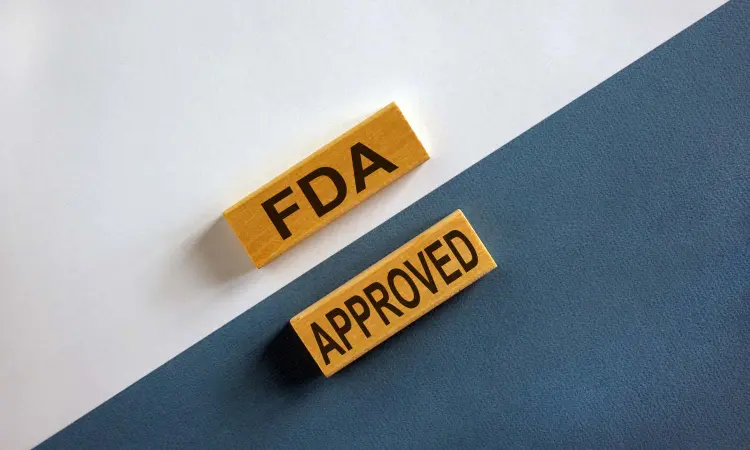- Home
- Medical news & Guidelines
- Anesthesiology
- Cardiology and CTVS
- Critical Care
- Dentistry
- Dermatology
- Diabetes and Endocrinology
- ENT
- Gastroenterology
- Medicine
- Nephrology
- Neurology
- Obstretics-Gynaecology
- Oncology
- Ophthalmology
- Orthopaedics
- Pediatrics-Neonatology
- Psychiatry
- Pulmonology
- Radiology
- Surgery
- Urology
- Laboratory Medicine
- Diet
- Nursing
- Paramedical
- Physiotherapy
- Health news
- Fact Check
- Bone Health Fact Check
- Brain Health Fact Check
- Cancer Related Fact Check
- Child Care Fact Check
- Dental and oral health fact check
- Diabetes and metabolic health fact check
- Diet and Nutrition Fact Check
- Eye and ENT Care Fact Check
- Fitness fact check
- Gut health fact check
- Heart health fact check
- Kidney health fact check
- Medical education fact check
- Men's health fact check
- Respiratory fact check
- Skin and hair care fact check
- Vaccine and Immunization fact check
- Women's health fact check
- AYUSH
- State News
- Andaman and Nicobar Islands
- Andhra Pradesh
- Arunachal Pradesh
- Assam
- Bihar
- Chandigarh
- Chattisgarh
- Dadra and Nagar Haveli
- Daman and Diu
- Delhi
- Goa
- Gujarat
- Haryana
- Himachal Pradesh
- Jammu & Kashmir
- Jharkhand
- Karnataka
- Kerala
- Ladakh
- Lakshadweep
- Madhya Pradesh
- Maharashtra
- Manipur
- Meghalaya
- Mizoram
- Nagaland
- Odisha
- Puducherry
- Punjab
- Rajasthan
- Sikkim
- Tamil Nadu
- Telangana
- Tripura
- Uttar Pradesh
- Uttrakhand
- West Bengal
- Medical Education
- Industry
FDA approves phentolamine ophthalmic for reversing pharmacologically-induced mydriasis

The U.S. Food and Drug Administration (FDA) has approved RYZUMVI (phentolamine ophthalmic solution) 0.75% for reversing pharmacologically-induced mydriasis produced by adrenergic agonists (e.g., phenylephrine) or parasympatholytic (e.g., tropicamide) agents. RYZUMVI is expected to be commercially available in the U.S. in the first half of 2024.
“The FDA’s approval of RYZUMVI marks a significant milestone for our Eye Care Division and underscores Viatris’ commitment to advancing eye care and enhancing access for both eye care professionals and patients,” said Viatris Eye Care Division President Jeffrey Nau, Ph.D. “Comprehensive dilated eye exams are vital for early detection of vision-compromising diseases.
Our hope is that by addressing patient dilation barriers, we’re empowering eye care professionals to broaden exam availability, leading to enhanced eye health outcomes. We look forward to launching RYZUMVI in the first half of next year, and to continuing to advance our robust eye care pipeline which is aimed at addressing a range of vision-related disorders."
In the U.S., an estimated 100 million comprehensive eye exams take place each year that involve pharmacologically-induced mydriasis (or dilation) of the pupils1, which can last up 24 hours2. Side effects of pharmacologically-induced mydriasis include sensitivity to light (photophobia)2 and blurred vision2, which may make it difficult to read, work and drive.3,4
“We are pleased to receive FDA approval of RYZUMVI eye drops and look forward to Viatris’ successful commercial execution,” said Rick Rodgers, MBA, Interim Chief Executive Officer of Ocuphire. “We are grateful to the many patients and investigators who participated in our clinical trials, as well as the Ocuphire and Viatris teams for their commitment to patients.”
RYZUMVI was evaluated in the comprehensive MIRA clinical trial program involving more than 600 subjects, including the MIRA-1 Phase 2b trial, MIRA-2 and MIRA-3 Phase 3 pivotal trials, and MIRA-4 Phase 3 pediatric trial. In the MIRA-2 and MIRA-3 trials, a total of 553 subjects aged 12 to 80 years, who had mydriasis induced by instillation of phenylephrine or tropicamide or a combination of hydroxyamphetamine hydrobromide and tropicamide (Paremyd) were randomized.
Two drops (study eye) or one drop (fellow eye) of RYZUMVI or placebo (vehicle) were administered one hour after instillation of the mydriatic agent. The percentage of subjects with study eyes returning to ≤0.2 mm from baseline pupil diameter was statistically significantly greater (p<0.01) at all time points measured from 60 minutes through 24 hours in the RYZUMVI group compared with the placebo (vehicle) group across both of the MIRA-2 and MIRA-3 trials (see Figure 1 in the US PI). The efficacy of RYZUMVI was similar for all age ranges including pediatric subjects aged 3 to 17 years. Pediatric subjects aged 12 to 17 years (n=27) were treated in MIRA-2 and MIRA-3 and pediatric subjects, aged 3 to 11 years (n=11) were treated in MIRA-4.
The most common ocular adverse reactions reported in >5% of subjects were instillation site discomfort including pain, stinging and burning (16%) and conjunctival hyperemia (12%). The only non-ocular adverse reaction reported in >5% of subjects was dysgeusia (6%).
Dr Kamal Kant Kohli-MBBS, DTCD- a chest specialist with more than 30 years of practice and a flair for writing clinical articles, Dr Kamal Kant Kohli joined Medical Dialogues as a Chief Editor of Medical News. Besides writing articles, as an editor, he proofreads and verifies all the medical content published on Medical Dialogues including those coming from journals, studies,medical conferences,guidelines etc. Email: drkohli@medicaldialogues.in. Contact no. 011-43720751


